My mother is Swedish, so we have always appreciated Carl Larsson and his many paintings of Swedish life. On a visit to Sweden, we visited his lovely home and studio.
Carl Larsson was a Swedish artist who lived from 1853 to 1919. He is best known for his beautiful watercolor paintings depicting idyllic family life and the Swedish countryside. Larsson’s paintings are characterized by their vibrant colors, rich textures, and attention to detail, and they continue to inspire and captivate viewers worldwide.
Table of Contents
- Who Was The Swedish Artist Carl Larsson?
- Our Top 9 Most Iconic Carl Larsson Paintings
- “Brita as Iduna” (1886) By The Swedish Artist Carl Larsson
- “Breakfast in the Open” (1896) By The Swedish Artist Carl Larsson
- “Crayfishing” (1901) By The Swedish Artist Carl Larsson
- “The Kitchen” (1898) By The Swedish Artist Carl Larsson
- “The Garden” (1894) By The Swedish Artist Carl Larsson
- “Fishing” (1905) By The Swedish Artist Carl Larsson
- “Christmas Morning” (1894) By The Swedish Artist Carl Larsson
- “Breakfast under the Big Birch” (1896) By The Swedish Artist Carl Larsson
- “Midsummer Dance” (1897) By The Swedish Artist Carl Larsson
- Frequently Asked Questions
- Related Questions
Who Was The Swedish Artist Carl Larsson?
Carl Larsson was a Swedish artist known for his idyllic and charming paintings of his family and home. Born in Stockholm in 1853, Larsson initially trained as a decorative painter before turning to fine art.
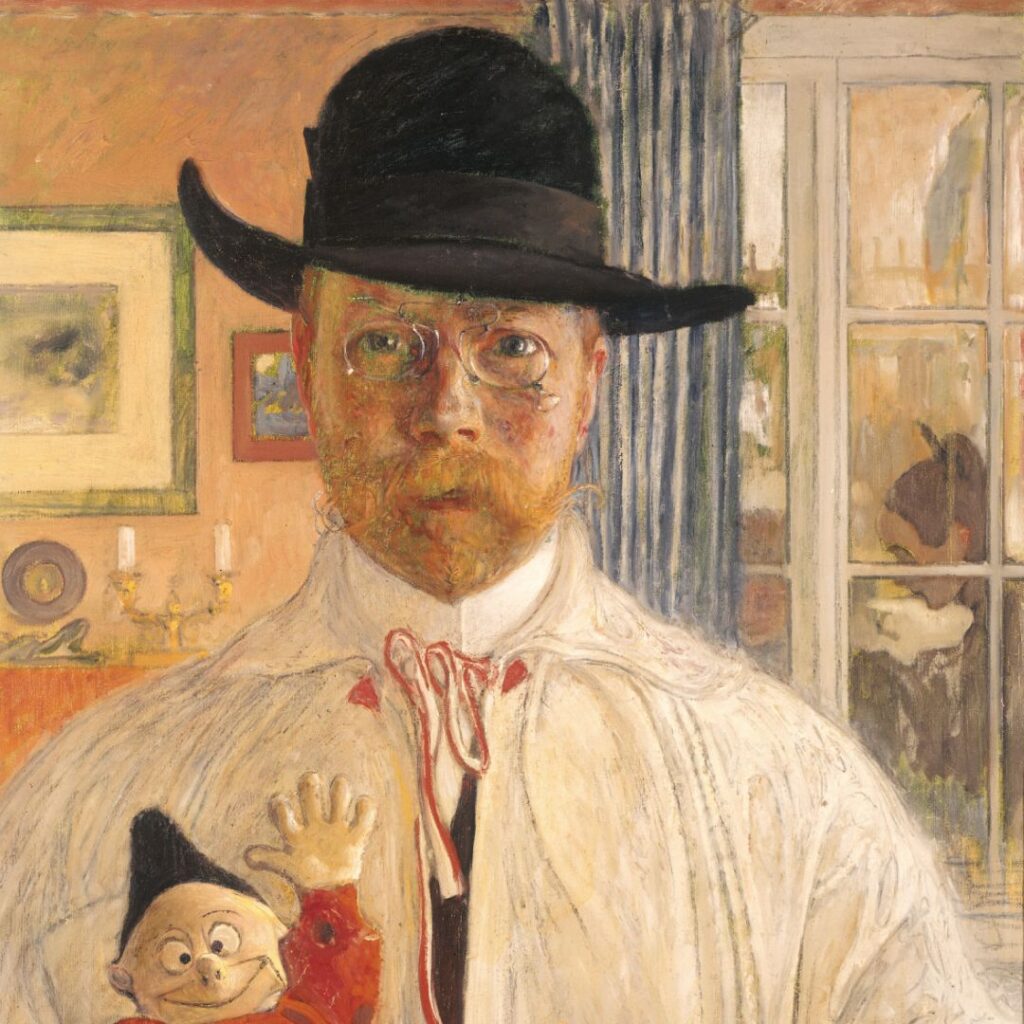
He gained recognition for his watercolor paintings, which depicted his wife and children in a whimsical and sentimental style.
The Arts and Crafts movement heavily influenced Larsson’s work, emphasizing the importance of handcrafted objects and traditional techniques. The Swedish landscape and the simple pleasures of domestic life also inspired him.
Throughout his career, Larsson produced numerous illustrations, watercolors, and oil paintings that were widely popular in Sweden and beyond. His work was celebrated for its warmth, humor, and sentimentality; he became a beloved figure in Swedish cultural history.
Today, Larsson’s home in Sundborn, Sweden, has been preserved as a museum and is a popular destination for art lovers and tourists. Many years ago, I had the chance to visit his home and museum. If you are in Sweden, visiting his home and museum is worth the visit.
Carl Larsson’s paintings continue to be admired for their beauty and charm, and his legacy as one of Sweden’s most beloved artists endures.
Our Top 9 Most Iconic Carl Larsson Paintings
Carl Larsson has so many great paintings it can be hard to pick our top 9. But we will explore nine iconic Carl Larsson paintings and why they are essential.
“Brita as Iduna” (1886) By The Swedish Artist Carl Larsson
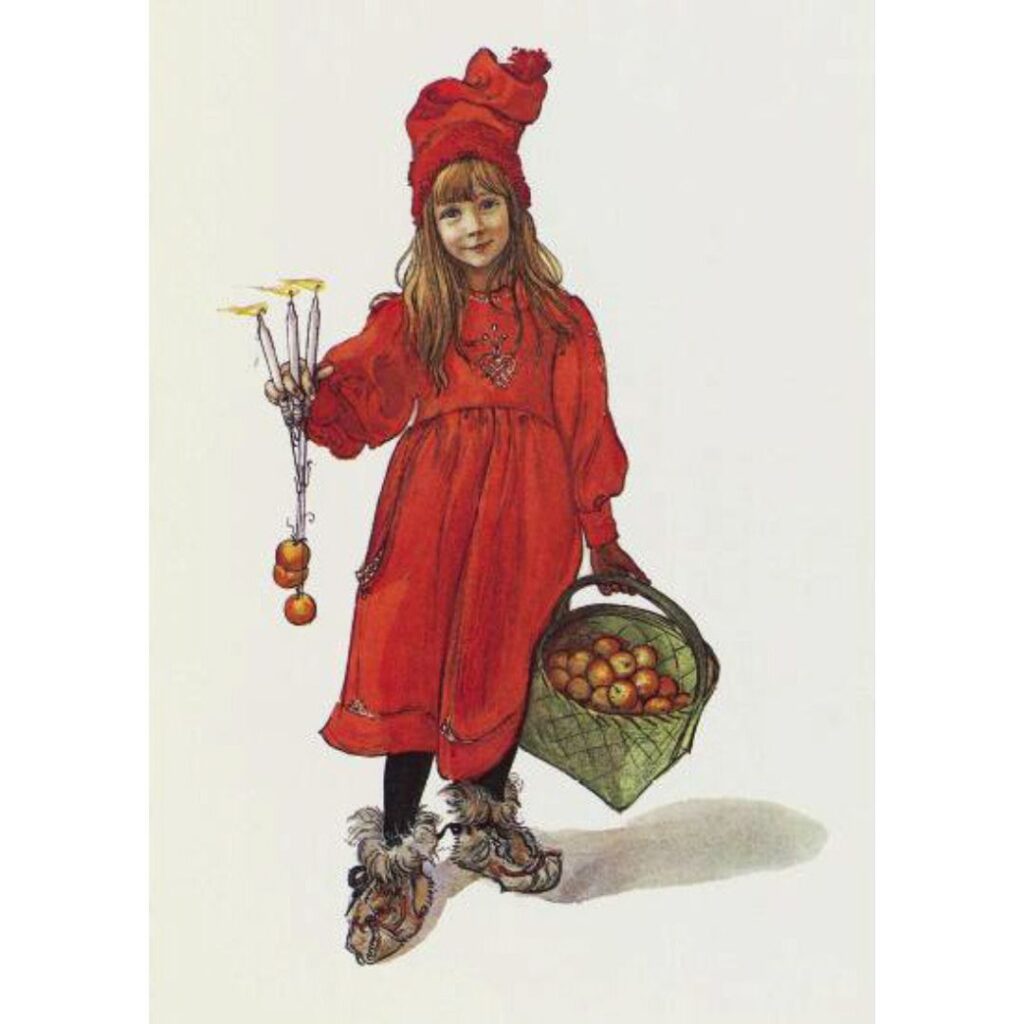
“Brita as Iduna” is one of Larsson’s earliest and most iconic paintings. It depicts his wife, Karin Bergöö Larsson, as the Norse goddess Iduna, associated with rejuvenation and youthfulness. The painting is notable for its bright colors and intricate details, including the delicate apples in the painting.
“Breakfast in the Open” (1896) By The Swedish Artist Carl Larsson

“Breakfast in the Open” is a charming painting that depicts the Larsson family enjoying a picnic breakfast in the Swedish countryside. The painting captures the simple joys of family life and the beauty of the natural world.
The painting is notable for its warm colors and the intricate details of the family’s clothing and picnic basket.
“Crayfishing” (1901) By The Swedish Artist Carl Larsson
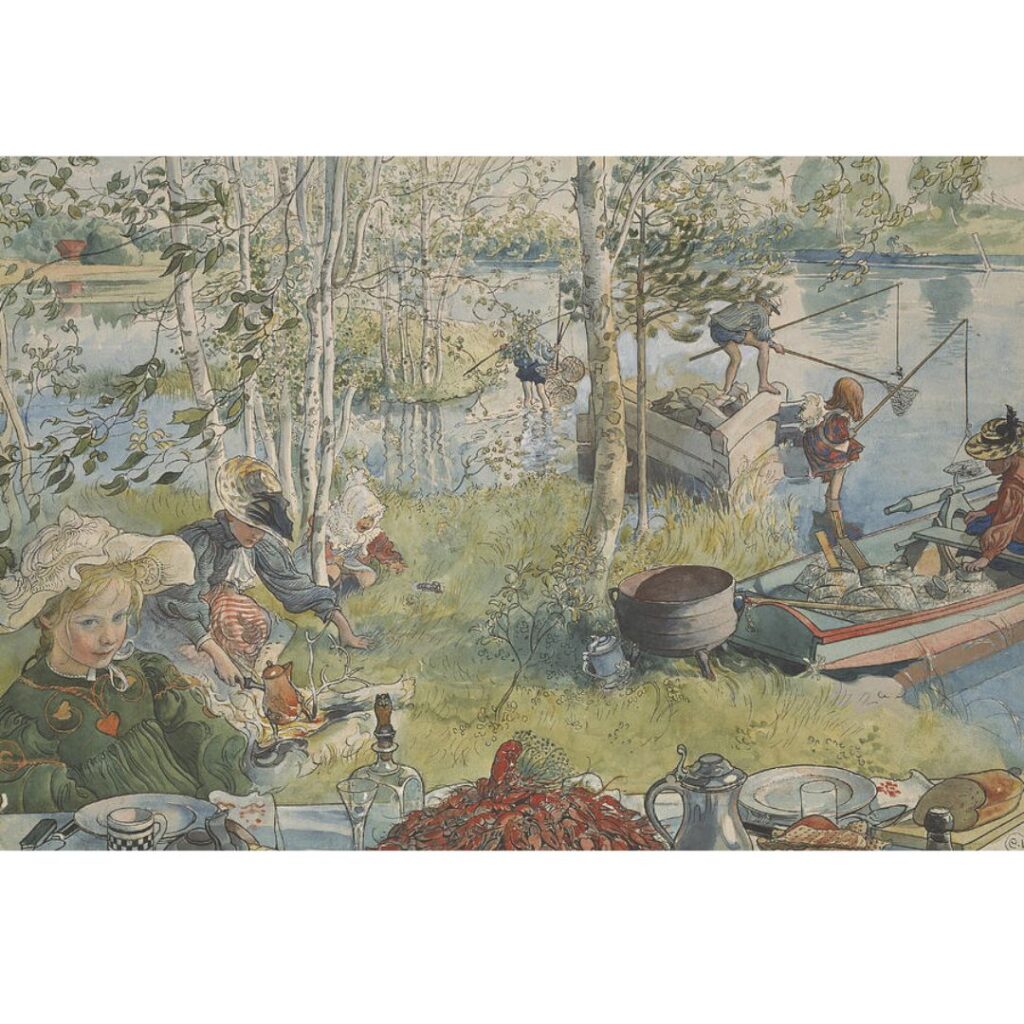
“Crayfishing” is a lively and colorful painting depicting children and adults catching crayfish in a stream. The painting is notable for its intricate details, including the vibrant colors of the crayfish and the reflections in the water.
The painting captures the joy and excitement of a summer day spent outdoors.
“The Kitchen” (1898) By The Swedish Artist Carl Larsson
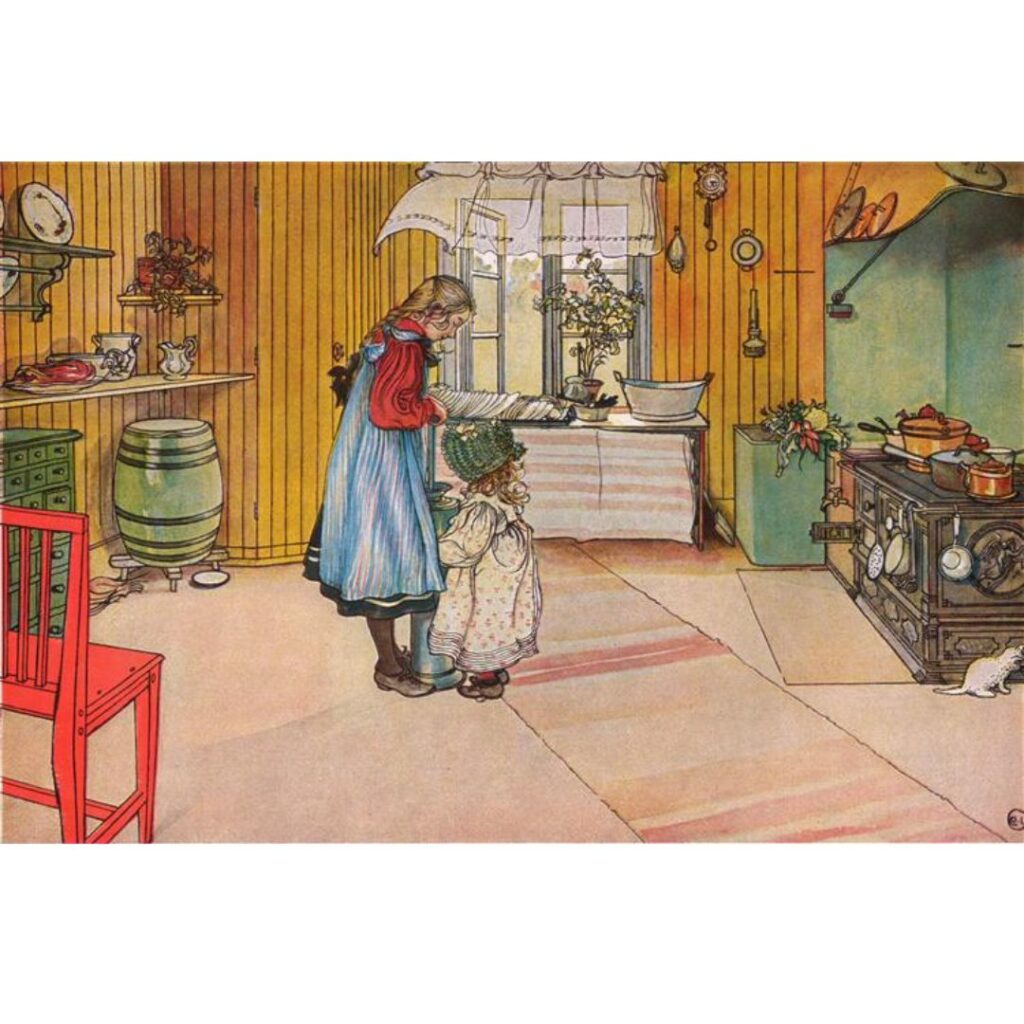
The Kitchen” is one of Larsson’s most famous paintings and depicts the bustling activity of a Swedish kitchen in the early 20th century. The painting is notable for its warm colors and intricate details, including the pots, pans, and utensils hanging on the walls.
The painting captures the warmth and intimacy of family life.
“The Garden” (1894) By The Swedish Artist Carl Larsson
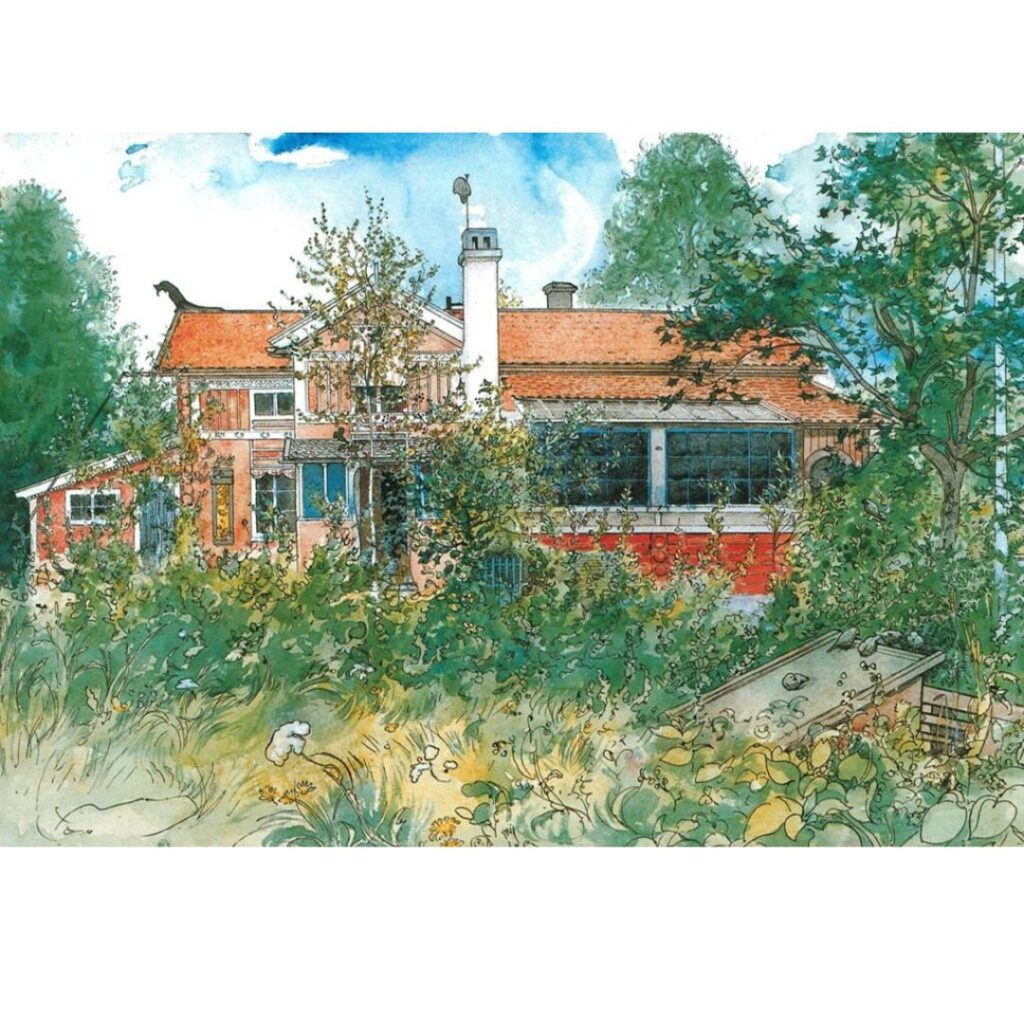
“The Garden” is a beautiful watercolor painting that depicts the Larsson family’s garden in Sundborn, Sweden. The painting is notable for its vibrant colors and intricate details, including the flowers, trees, and garden structures.
The painting captures the beauty and tranquility of the natural world.
“Fishing” (1905) By The Swedish Artist Carl Larsson
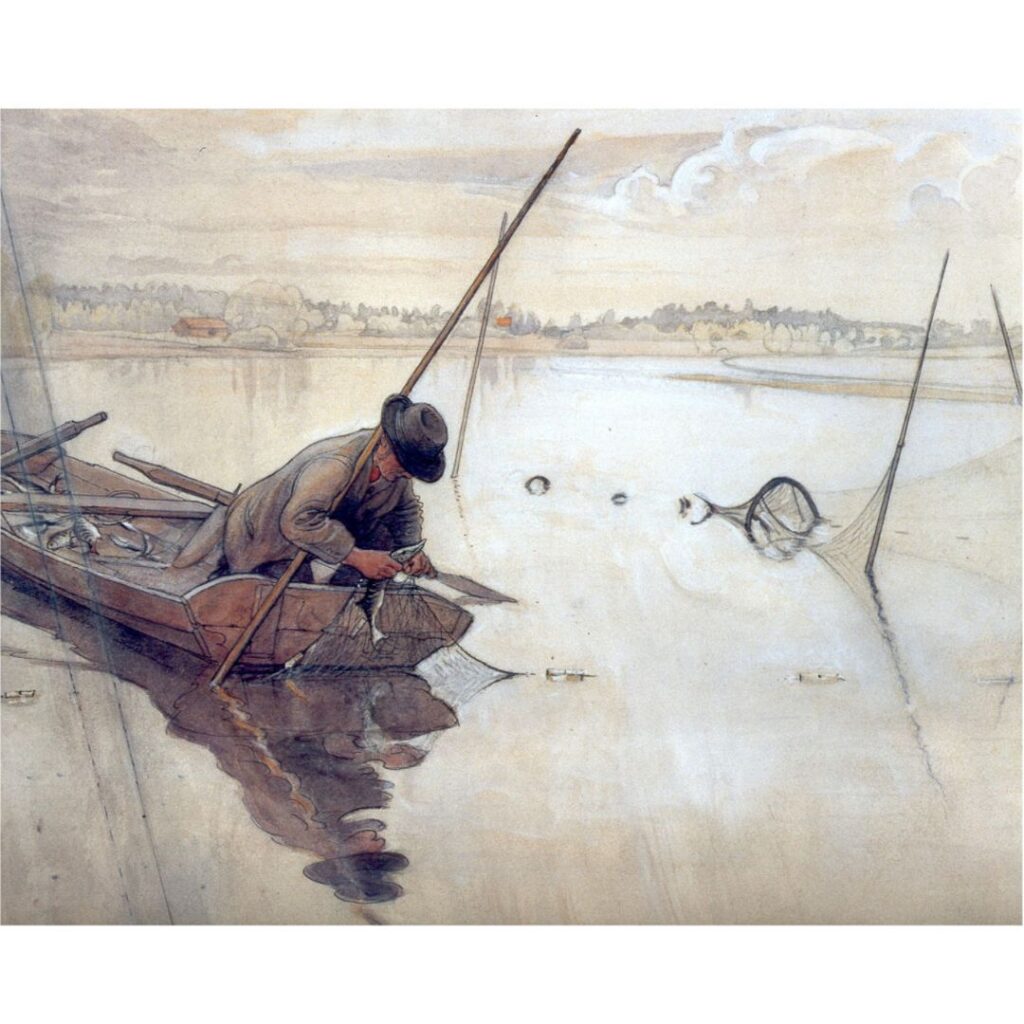
“Fishing” is another painting that depicts the joy and excitement of catching crayfish. The painting is notable for its bright colors and intricate details, including the fishing nets, baskets, and other equipment used by the fishermen.
The painting captures the energy and vitality of a summer day on the water.
“Christmas Morning” (1894) By The Swedish Artist Carl Larsson

“Christmas Morning” is a charming painting depicting the Larsson family gathering on Christmas morning. The painting is notable for its warm colors and intricate details, including the presents, candles, and other decorations.
The painting captures the magic and wonder of the holiday season. This painting has long been one of my family’s favorite Christmas paintings.
“Breakfast under the Big Birch” (1896) By The Swedish Artist Carl Larsson

“Breakfast Under The Big Birch” is a delightful painting that depicts the Larsson family home in Sundborn eating outside near the birch tree. The painting is notable for its warm colors and intricate details, including the garden and surrounding areas.
The painting captures the joy of a family eating outdoors together.
“Midsummer Dance” (1897) By The Swedish Artist Carl Larsson

“Midsummer Dance” is a vibrant and colorful painting that depicts a traditional Swedish Midsummer celebration. The painting is notable for its intricate details, including the traditional costumes worn during this time in Sweden.
This painting is truly a Swedish classic and gives us a glimpse into the Swedish midsummer celebrations.
The paintings of Carl Larsson offer a timeless beauty that continues to captivate viewers worldwide. His depictions of domestic life and family relationships are imbued with warmth and intimacy, inviting us to share in the joys and comforts of home.
Through his delicate watercolors and masterful use of color, Larsson has created a rich and enchanting visual world that inspires us to appreciate life’s simple pleasures.
Whether you are a fan of art history and interior design or appreciate the beauty of a well-crafted painting, Carl Larsson’s work will surely delight and inspire you.
By discovering his paintings, we gain a deeper appreciation for the importance of family, home, and the enduring power of art to move and enrich our lives.
Carl Larsson is genuinely an example of a great and beloved Swedish artist.
Anita Louise Art is dedicated to art education, great artists, and inspiring others to find and create their art. We love art that uplifts and inspires. #ArtToMakeYouSmile! #ArtToMakeYouHappy!
If you are interested to see any of my art, you can find out more by clicking here. If you are interested in what inspires me and my paintings, you can discover more by clicking here.
We have a free newsletter and would love you to be part of our community; you can subscribe to the newsletter by clicking here. If you have any questions, I would be happy to talk to you at any time. You can reach me, Anita, by clicking here.
Subscribe to our Anita Louise Art YouTube Channel filled with great videos and information by clicking here.
Join us for our podcast “5 Minutes With Art.” Spend just 5 minutes a week with us to discover and learn about great art and artists. You can find out more about our podcast by clicking here.
Frequently Asked Questions
Who was Carl Larsson, and why is he renowned?
Carl Larsson was a Swedish artist (1853-1919) celebrated for his exquisite watercolor paintings capturing the essence of idyllic family life and the Swedish countryside. His works are characterized by vibrant colors and meticulous attention to detail.
What themes are commonly found in Carl Larsson’s paintings?
Larsson’s paintings often revolve around themes of family life, showcasing the joys and simplicity of daily living. His art beautifully captures the essence of Swedish culture, nature, and the warmth of domestic scenes.
How many paintings are there in Carl Larsson’s portfolio, and are they all centered around Swedish life?
Larsson created numerous paintings throughout his career, with a significant focus on Swedish life. While not exclusively limited to this theme, a substantial portion of his work reflects the charm and beauty of Swedish landscapes and family life.
Can you highlight a few of Carl Larsson’s most famous paintings?
Some of his renowned works include “Breakfast Under the Big Birch,” “Crayfish Party,” and “Midvinterblot.” These paintings showcase Larsson’s mastery in capturing the warmth and intimacy of domestic scenes.
How did Carl Larsson’s personal life influence his art?
Larsson’s own family life played a pivotal role in influencing his art. His home, named Sundborn, served as both a residence and a canvas for his creative expressions. Visitors can witness the seamless integration of his artistic vision into his domestic surroundings.
What makes Larsson’s use of watercolors unique in his paintings?
Larsson’s adept use of watercolors is distinctive for its vibrant hues and nuanced textures. His skillful application of this medium brings his subjects to life, creating a timeless and captivating quality in his artwork.
Are there any specific techniques or artistic elements that stand out in Larsson’s paintings?
Larsson’s attention to intricate details, combined with his ability to convey emotion through facial expressions and body language, distinguishes his work. Additionally, his use of light and shadow contributes to the overall depth and realism of his paintings.
How has Carl Larsson’s legacy endured over the years?
Larsson’s legacy endures through the continued appreciation of his art worldwide. His paintings remain a source of inspiration for artists and admirers alike, offering a glimpse into the beauty of Swedish life during his era.
What is the significance of visiting Carl Larsson’s home and studio in Sweden?
Visiting Larsson’s home, Sundborn, provides a unique opportunity to experience the artist’s environment firsthand. The preserved setting allows visitors to witness the connection between Larsson’s life and his art, creating a deeper understanding of his creative process.
How can one explore and appreciate Carl Larsson’s paintings further, especially for someone with a Swedish connection?
To delve deeper into Larsson’s art, one can explore exhibitions, art books, and online resources dedicated to his work. Additionally, visiting Swedish museums and cultural institutions often offers a comprehensive view of Larsson’s contributions to the artistic heritage of Sweden.
Related Questions
What Are The Characteristics Of Mannerism Art?
Mannerism was an art movement filled with elongated bodies, tiny heads, and human figures in twisted forms. Perspective and proportion were unnecessary, but colors and contrasts, virtuosity, and agitated compositions are essential.
By clicking here, you can learn more by reading What Are The Characteristics Of Mannerism Art?
What Was The Focus Of Renaissance Art?
The focus of Renaissance art was on the classics of Greek and Rome, humanist philosophy, and the study of the human figure. Realism was also an essential part of Renaissance art. The great artists of the Renaissance also became great anatomists and studied human beings.
By clicking here, you can learn more by reading What Was The Focus Of Renaissance Art?.
What Are The Major Periods In Western Art History?
The significant Western art history periods are defined as Prehistoric Art, Ancient Art, Medieval Art, the Renaissance, Mannerism, Baroque, Rococo, Neoclassicism, Romanticism, Realism, Art Nouveau, Impressionism, Post – Impressionism, Fauvism, Expressionism, Cubism, Surrealism, Abstract Expressionism, Op Art, Pop Art, Arte Povera, Minimalism, Conceptual Art and Contemporary Art.
By clicking here, you can learn more by reading What Are The Major Periods In Western Art History?.

